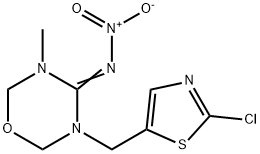BETA-CYPERMETHRIN
- CAS NO.:65731-84-2
- Empirical Formula: C22H19Cl2NO3
- Molecular Weight: 416.3
- MDL number: MFCD04112603
- EINECS: 265-898-0
- SAFETY DATA SHEET (SDS)
- Update Date: 2024-12-18 14:07:02

What is BETA-CYPERMETHRIN?
The Uses of BETA-CYPERMETHRIN
Beta-cypermethrin is used to control a wide range of insects, especially Lepidoptera and Coleoptera, in alfalfa, cotton, cereals, fruit, vines, vegetables, beans, beets, tobacco, oilseed rape and other crops. It is also used for insect control in public health and for ectoparasite control on animals.
The Uses of BETA-CYPERMETHRIN
(1R,2R,1''S)-Cypermethrin functions as a degartion product (Pyrethroid insecticides) used in agriculture. Insecticidal activity of most active isomers of fenvalerate and other recent pyrethroids.
Definition
ChEBI: (1R)-cis-(alphaS)-cypermethrin is a cyclopropanecarboxylate ester. It is an enantiomer of a (1S)-cis-(alphaR)-cypermethrin.
Metabolic pathway
Beta-cypermethrin is composed of two of the four cis-cypermethrin isomers (1RcisaS and 1ScisaR isomers) [i.e. alpha-cypermethrin] and two of the four trans-cypermethrin isomers (1RtransaS and 1StransaR) [i.e. thetacypermethrin]. The fate of these four isomers (separately) has been reported for soils. Metabolite analysis was conducted in enough detail to indicate that the fate of the components was very similar to their fate when presented to biological systems as part of cypermethrin. Thus reference can be made to the cypermethrin entry for details. The structure and Scheme numbering used below refers to the cypermethrin entry.
Degradation
Beta-cypermethrin is stable as a solid but it is epimerised in weak base
solution and readily hydrolysed at higher pH. Its half-lives at pH values
3, 7 and 9 (25 °C) were 50,40 and 15 days (PM). By analogy with cypermethrin,
the rate-determining step in dilute solution is nucleophilic attack
by OH-. Half-lives of cis-cypermethrin in river water and sea water at
25 °C were 21 and 24 days, respectively; the trans-isomer would be
expected to be more rapidly degraded. Major products were 3-(2,2-
dichlorovinyl)-2,2-dimethylcyclopropanecarboxylic acid (2, DCVA), 3-
phenoxybenzaldehyde (9, 3PBAl) and a-carbamoyl-3-phenoxybenzyl
3-(2,2-dichlorovinyl)-2,2-dimethylcyclopropanecarboxylate( the amide
3); minor products were the a-carboxy analogue of 3 (4) and 3-
phenoxybenzoic acid (10,3PBA) (see cypermethrin, Schemes la and lb).
Photodecomposition would be expected to be similar to that of
cypermethrin.
Properties of BETA-CYPERMETHRIN
| Melting point: | 53-55 °C |
| Boiling point: | 511.3±50.0 °C(Predicted) |
| Density | 1.329±0.06 g/cm3(Predicted) |
| vapor pressure | 1.8×10-7 Pa (20 °C) |
| Water Solubility | 0.09 mg l-1(25 °C) |
| CAS DataBase Reference | 65731-84-2 |
| EPA Substance Registry System | Cyclopropanecarboxylic acid, 3-(2,2-dichloroethenyl)-2,2-dimethyl-, (S)-cyano(3-phenoxyphenyl)methyl ester, (1R,3R)- (65731-84-2) |
Safety information for BETA-CYPERMETHRIN
Computed Descriptors for BETA-CYPERMETHRIN
New Products
Methyl (R)-1-Boc-4,4-difluoropyrrolidine-2-carboxylate 2,2-Difluoropropylamine hydrochloride tert-butyl 3-bromoazetidine-1-carboxylate (R)-1-Boc-3-hydroxypyrrolidine DIFLUOROACETIC ANHYDRIDE 2,2-Difluoropropionic acid Diallylamine, 99% Calcium hydroxide, 95% Aluminum oxide, basic 2-Bromophenylacetonitrile, 97% L-tert-Leucine,97% N-Hydroxy-2-methylpropanimidamide 4-(3,4-Dichlorophenyl)-3,4-Dihydro-N-Methyl-1-(2H)-Naphthalenimine (Schiff Base) 2-AMINO-3,5-DIBROMO BENZALDEHYDE [ADBA] L-Glutamic Acid Dimethyl Ester Hcl 10-Methoxy-5H-dibenz[b,f]azepine 5-Cyanophthalide N, N-Carbonyldiimidazole (CDI) Dibenzoyl Peroxide Titanium Dioxide 2-(Methylthio) Benzonitrile Sodium Acetate Anhydrous Allopurinol 1,5-DibromopentaneRelated products of tetrahydrofuran








You may like
-
![Cis-2-(Bromomethyl)-2-(2,4-Dichlorophenyl)-1,3-Dioxolane-4-Ylmethyl Benzoate [CBB] 61397-56-6 99%](https://img.chemicalbook.in//Content/image/CP5.jpg) Cis-2-(Bromomethyl)-2-(2,4-Dichlorophenyl)-1,3-Dioxolane-4-Ylmethyl Benzoate [CBB] 61397-56-6 99%View Details
Cis-2-(Bromomethyl)-2-(2,4-Dichlorophenyl)-1,3-Dioxolane-4-Ylmethyl Benzoate [CBB] 61397-56-6 99%View Details
61397-56-6 -
 287930-77-2 / 142569-70-8 99%View Details
287930-77-2 / 142569-70-8 99%View Details
287930-77-2 / 142569-70-8 -
![2033-24-1 2,2-Dimethyl-1,3-Dioxane-4,6-Dione [Meldrum Acid] 98%](https://img.chemicalbook.in//Content/image/CP5.jpg) 2033-24-1 2,2-Dimethyl-1,3-Dioxane-4,6-Dione [Meldrum Acid] 98%View Details
2033-24-1 2,2-Dimethyl-1,3-Dioxane-4,6-Dione [Meldrum Acid] 98%View Details
2033-24-1 -
 Ethyl-2-Chloroacetoacetate 609-15-4View Details
Ethyl-2-Chloroacetoacetate 609-15-4View Details
609-15-4 -
 CIS- BROMO BENZOATEView Details
CIS- BROMO BENZOATEView Details
61397-56-6 -
 609-15-4View Details
609-15-4View Details
609-15-4 -
![1-(6-Methylpyridin-3-Yl)-2-[4-(Methylsulfonyl)Phenyl]Ethanone [Ketosulfone] 99%](https://img.chemicalbook.in//Content/image/CP5.jpg) 1-(6-Methylpyridin-3-Yl)-2-[4-(Methylsulfonyl)Phenyl]Ethanone [Ketosulfone] 99%View Details
1-(6-Methylpyridin-3-Yl)-2-[4-(Methylsulfonyl)Phenyl]Ethanone [Ketosulfone] 99%View Details
221615-75-4 -
 27143-07-3View Details
27143-07-3View Details
27143-07-3
